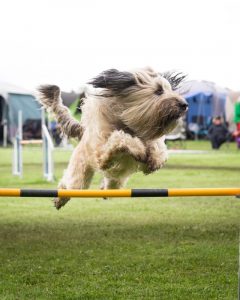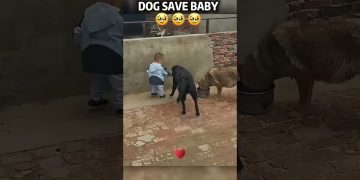Agility Training for Dogs. Are you looking for a fun and engaging way to bond with your furry friend and keep them physically and mentally stimulated? Look no further than agility training!
Agility training is not only a fun activity for you and your dog to enjoy together, but it also helps to improve your dog’s physical fitness, mental sharpness, and overall well-being. In this guide, we’ll go over everything you need to know to get started with agility training for your dog.

Introduction to Agility Training
Agility training is a sport that involves guiding your dog through a course of obstacles, such as jumps, tunnels, and weave poles. It’s a great way to build trust and communication between you and your dog, and it’s also a fantastic workout for both of you.
Not only does agility training improve your dog’s physical fitness, but it also helps to keep their mind sharp by providing mental stimulation. Plus, who doesn’t love watching their pup fly through an agility course like a pro?
Equipment Familiarization
Before getting started with agility training, it’s important to familiarize yourself with the equipment that will be used. The most common pieces of equipment used in agility training include:
- Jumps: These come in a variety of shapes and sizes, and can be made of various materials.
- Tunnels: These can be made of fabric or plastic and come in different lengths and diameters.
- Weave Poles: These are a series of poles that the dog must weave in and out of as they navigate the course.
It’s important to ensure that the equipment is set up safely and to always supervise your dog while they’re training.
Basic Obedience Training
Before diving into agility training, it’s essential to make sure that your dog has a solid foundation of basic obedience commands, such as sit, stay, come, and heel. These commands will be crucial for guiding your dog through the agility course and ensuring their safety.
If your dog is not already well-trained in basic obedience, it’s a good idea to work on those skills before beginning agility training.
 Basic Agility Skills
Basic Agility Skills
Once your dog has a good grasp of basic obedience commands, it’s time to start working on basic agility skills. Begin by teaching your dog to jump over obstacles, run through tunnels, and weave through poles.
It’s important to use positive reinforcement techniques, such as treats and praise, to encourage and reward correct behavior. And remember, take it slow and be patient, your dog may not understand the new exercises right away, but with time and patience, they’ll get it.
Advanced Agility Skills
As your dog becomes more comfortable and confident with basic agility skills, you can gradually introduce more complex obstacles and maneuvers. These can include contact obstacles, such as the A-frame and dogwalk, and sequences of obstacles that require your dog to navigate multiple obstacles in a row.
It’s important to continue to use positive reinforcement techniques and to never push your dog too hard.
Agility Courses
Once your dog has mastered basic and advanced agility skills, it’s time to introduce them to agility courses. These consist of a series of obstacles arranged in a specific pattern, and the goal is for your dog to complete the course with minimal guidance from you.
It’s a good idea to start with simpler courses and gradually work your way up to more complex ones. And don’t forget to celebrate your dog’s successes!









Discussion about this post